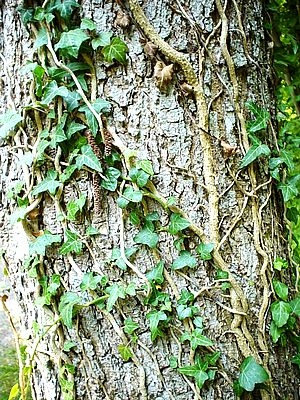Last year I was brave and published my New Year’s resolutions– at least those that pertain to the garden. It’s now the day of reckoning. Let’s see how I did and which ones I’ll keep for 2011. In the garden, as in life, simple changes can make a big difference over a long time. I’m adding a couple new ones that are important, too.
Learn something new every day. Whether it’s something new in the garden or elsewhere, keep learning. I’m starting to learn about local mushrooms. They come up in the most beautiful places. I’m looking forward to the Fungus Fair in January.
Enjoy the simple things. Laugh often. Life is not measured by the breaths we take but by the moments that take our breath away. Everyday is a gift, that’s why we call it the present.
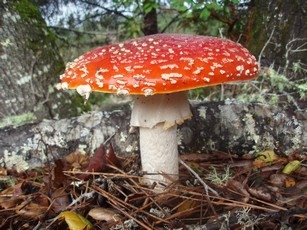
Of the 16 gardener’s resolutions I made last year I can honestly say I achieved half of them.
I did pay more attention to the size that plants grow and believed the tag when it said "spreading habit". But I also found that pruning shears are life savers when you just have to have that new foliage plant that just came out.
I started making garden journal entries in February instead of January as I resolved. But then I tried to make up for it in March, May, June, October, November and December. I missed 5 out of 12 months. I get a "C-".
I added more pollen-producing flowering plants to attract beneficial insects which kept the good guys around longer to eat the bad bugs. And I learned what quite a few of the good guys look like. ( That counts as two resolutions )
I sat in my garden and enjoyed it, not jumping up to rearrange containers. (This one was easy)
I applied to get my little garden certified as a wildlife habitat with the National Wildlife Federation by making sure I provided food sources, water, cover, places to raise young and used sustainable gardening techniques.
I fertilized my perennials a couple of times this year with organic compost and fertilizer instead of just once and boy were they happy. The trees and larger shrubs really only need a light dose once a year so I was good there.
I wore sunscreen everyday. (My doctor wants a hat, too. Maybe this year I’ll wear one.)
The other half of last year’s resolutions are being recycled as they’re still good ones:
I will not buy a new flower, shrub or tree until I have a plan for it in the garden.
I will sharpen and clean my garden tools so they look spiffy and work better.
I will start a worm bin with my kitchen scraps and a compost pile for leaves and plant debris. (I have so many raccoons it’s like a party out there at night but I’m going to come up with a critter-proof solution.)
I will weed regularly- not waiting until they’re so tall they swallow up my gardening tools when I lay them down.
I will accept a few holes in my plants but tour the garden regularly to identify if a problem is getting out of control and I need to break out an organic pesticide.
I will prune my maples, transplant my overgrown containers and divide my perennials when I’m supposed to.
I will plant more things to eat. Edibles anywhere in the garden feed the body and the soul. (This summer was so cold I didn’t have much luck in my partial shade.)
I will stop rationalizing my plant habit is better than gambling, clothes shopping or smoking.
I will do better to practice what I preach in this column.
Happy New Year in 2011 from The Mountain Gardener
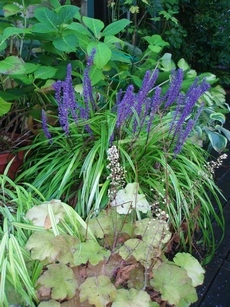

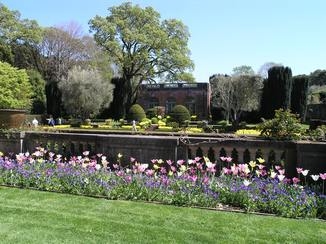 the plants in the garden come to life. I’ve been invited to tour a garden in Scotts Valley in April when many of the early flowering plants will be in bloom. I’ve been to this garden before and there’s always an interesting tree, shrub or flower to enjoy.
the plants in the garden come to life. I’ve been invited to tour a garden in Scotts Valley in April when many of the early flowering plants will be in bloom. I’ve been to this garden before and there’s always an interesting tree, shrub or flower to enjoy. 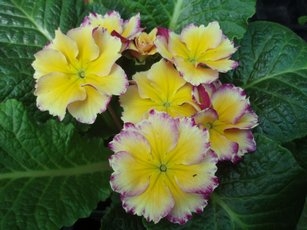 But is it unusual to have warm weather around here in January? Not at all. Just last year before the rains started we had several weeks of Caribbean-like weather. Back in 2009 during the first two weeks of January temps were in the 70’s and low 80’s. Don’t worry. Mother Nature knows how to adjust to changes in the weather- slowing down when it’s really cold and catching up when it’s mild.
But is it unusual to have warm weather around here in January? Not at all. Just last year before the rains started we had several weeks of Caribbean-like weather. Back in 2009 during the first two weeks of January temps were in the 70’s and low 80’s. Don’t worry. Mother Nature knows how to adjust to changes in the weather- slowing down when it’s really cold and catching up when it’s mild. 